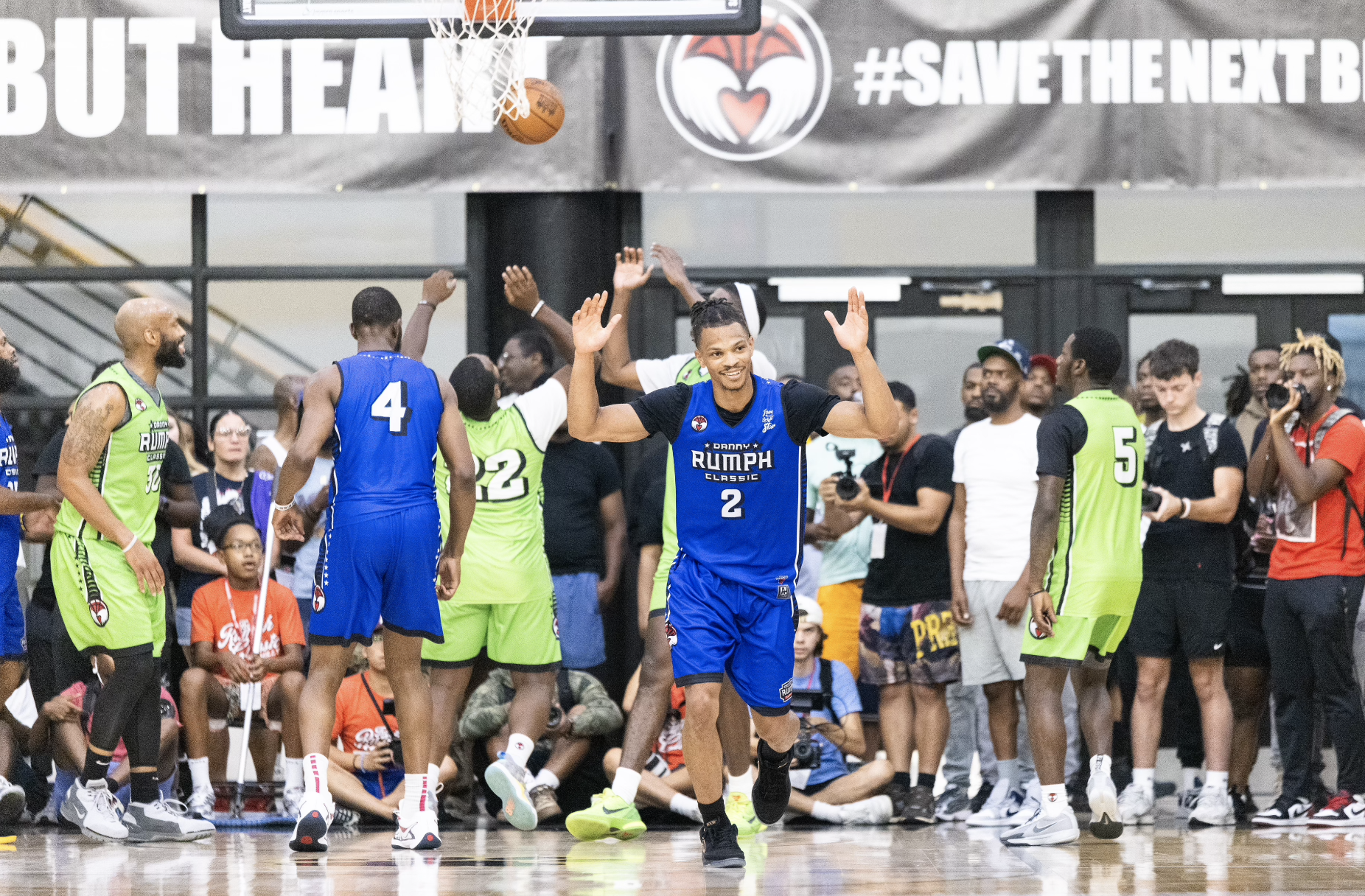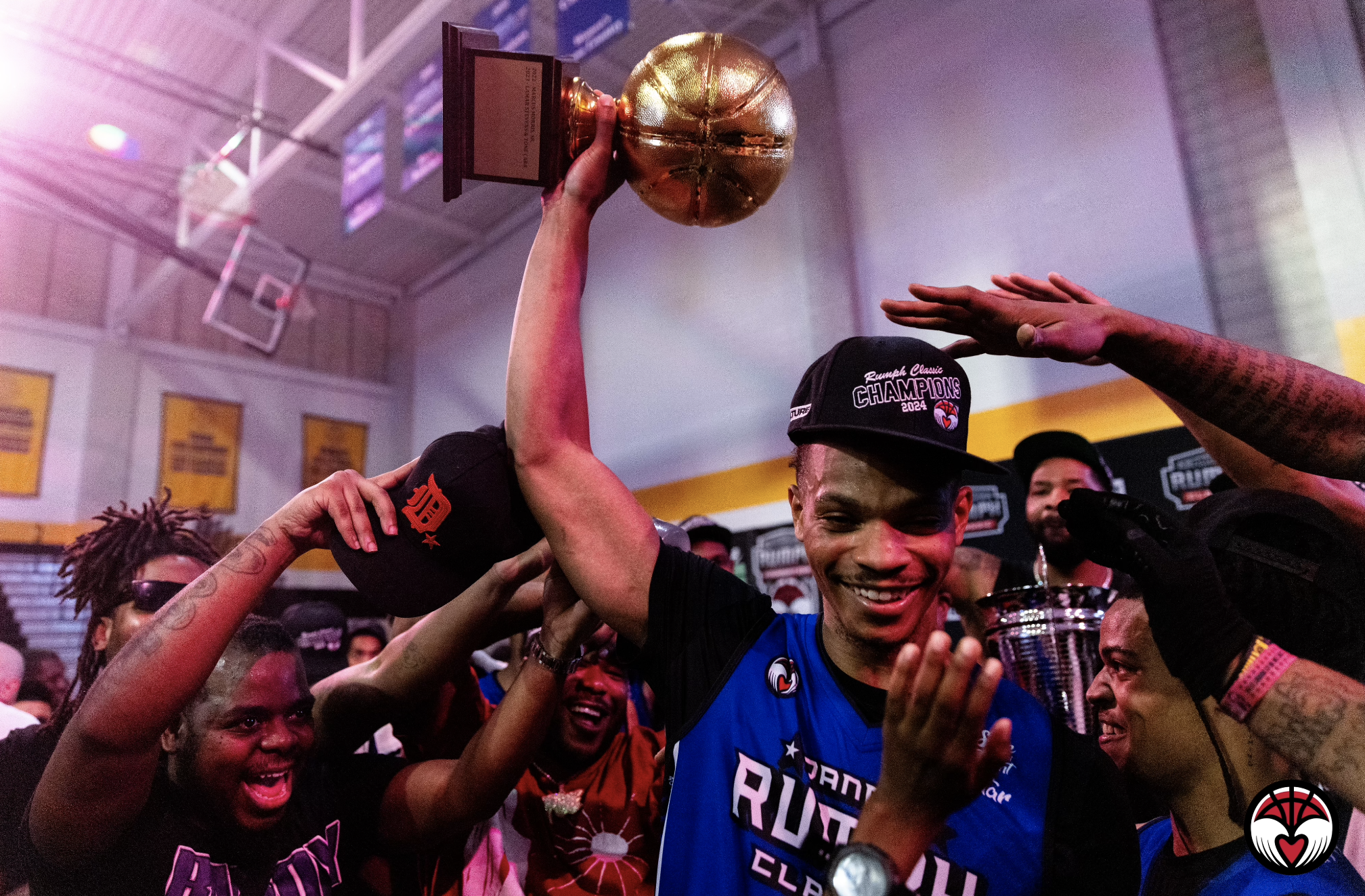Danny Rumph was planning to head back to school at Western Kentucky University in the morning and knew he needed to get one more run in with his buddies. It was around 10 p.m. on May 8, 2005 when Rumph picked up the phone to organize a pickup basketball game at the Mallery Recreation Center at Morton and Johnson Streets in Philadelphia — their go-to spot.
Rumph had recently finished up his junior year in Bowling Green, KY coming off an impressive junior season helping lead the Hilltoppers to finish second in the Sun Belt East. There was a lot of talent that showed out in the gym that Mother’s Day evening including two of his closest childhood friends. Sharif Bray, who played at Cheyney University at the time, and Justin Scott at East Stroudsburg.
Some of the best players in Philadelphia joined them at Mallery, many of whom were home from school for the weekend eager to play one more round of pickup before the crew of Philadelphia natives went their separate ways.
Bray describes that whole night as a blur. One minute they were amidst a competitive bout getting up and down the floor, he remembers the game-winning three that Rumph hit and as if time could skip, his best friend was suddenly being carted away in an ambulance.
Scott experienced the night with a bit more fearful cognizance. After Rumph knocked down that shot from the right side of the floor there was a normal pause in the action before the next game. Guys grabbing water and chatting briefly.
But Rumph had collapsed to the floor.
“The main thing that really sucks and really sticks with me is how long it took for the ambulance to get there,” Scott said. “The fact that none of us knew what to do or what was going on.”
Close to an hour later, Rumph was rushed to Albert Einstein Medical Center in an ambulance and later died of a fatal heart attack caused by Hypertrophic Cardiomyopathy (HCM), at the age of 21.
After his passing, Rumph’s Mom (Candy Owens) and Uncle (Marcus Owens) gathered family and friends to create the Daniel E. Rumph II Foundation with one important mission: save the next bright star.
It was uncommon for gyms in the area to have automated external defibrillators (AED) which are used to help those experiencing Sudden Cardiac Arrest (SCA). And it was equally as rare to find people who knew how to use one.
The DERII Foundation set out to raise funds for CPR classes and heart screenings free of charge for kids in the community. It has also worked hard to keep Rumph’s story alive as a way to educate the next generation on HCM, an inflammation of the heart making it harder to pump blood and the leading cause of SCA for today’s youth.
Today, 16 years after his passing, it’s much more common to find AEDs in recreation centers in the Philadelphia area thanks to the work of his family and friends.
Those close to Rumph remember him fondly as a special basketball talent with a benevolent personality and an affinity for fashion and sneakers.
The 6-foot-2 point guard spent his junior and senior seasons at Parkway High School before taking a prep year at Maine Central Institute, where he averaged 18 points and seven assists. He then went on to play three seasons at Western Kentucky. Rumph was recognized as the Hilltoppers’ most improved player at a postseason banquet two months prior to his passing.
Sharif Hanford, who now plays a major role in making the Rumph possible, has fond memories of them spending countless hours hooping together growing up.
The two of them would go play in an AAU tournament first thing on Saturday mornings around 8 a.m. They couldn’t wait to get back on the court so they would link back up around noon at Mallery. After getting something to eat it was on to the next court, getting a workout in at Pleasant Playground, about half a mile down the road. Hanford and Rumph would meet again at around 4 p.m. playing outside until the park lights went out.
“I don’t think we looked at it as us dedicating ourselves to basketball,” Hanford said, in hindsight. “It’s just what we did.”
There was one AAU tournament at Penn State from their high school days that sticks out in Bray’s memory epitomizing who his best friend was on the court.
Right after the game tipped off, on the contest’s very first possession, Rumph turned the ball over, dribbling it off his foot. He was “just being lazy or something,” as Bray remembers.
“Oh, he’s nervous!” the opposing coach shouted out from the sideline.
Rumph went on to pour in 34 points that game. Once that coach challenged him, the 16-year-old from Philly let his fiery competitive nature take his game to a whole new level.
If you ask anybody who watched Rumph play growing up or who witnessed his development, there isn’t a sliver of doubt that he could have been paid to play the game he loved.
Mike Morak, the lead director of the Rumph Classic, recalls coming back from Five Star camp before his senior year and at that point he hadn’t really seen his best friend take off from an athleticism standpoint. It had been a while since they played together but after coming back into town they got a call about playing in a tournament at Girard College.
“We’re in layup lines and he starts doing the Michael Jordan ‘rock the cradle’ dunk,” Morak said. “That’s when we knew that he had just taken his game to another level.”
Perhaps his most substantial influence on the Philadelphia community can be seen in the younger generation, the same group of people Rumph’s closest kin set out to save.
Hanford pointed out that there are kids who were born the same year his best friend passed away or soon after and know all about his story.
“I think the biggest impact [of the Rumph] is the lives we’re saving but I don’t think everyone focuses in on that,” Scott said. “For us, people close to it and who help run the foundation, that’s something that’s very evident.
“But for the casual Philly basketball fan or in the community,” he added, “I think what the tournament has done is for a week in the summer it brings people together.”








